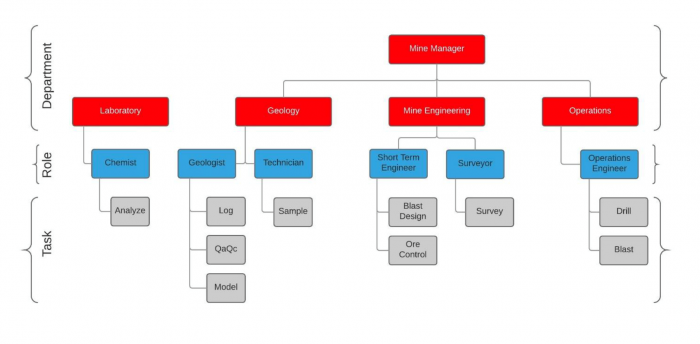How better data management gives better mining results
The promise of using data to help make business decisions spans every modern industry in the world. If you listen to the pundits, they’ll say you can expect greater insights to assist with fast, razor-sharp decisions. While this idea is incredibly seductive, the reality of managing that data, especially mining data, is difficult.
There’s no doubt about it, geologists do a great job collecting data. Mining geologists are awash in data and that’s part of the problem. Geoscientific data comes with a big price tag whether you’re drilling, sampling or blasting. When data is stored in multiple places, with various versions of the same data and different stakeholders controlling it, it’s hard to know what data, or version of the data, to trust. When you can’t implicitly trust your mining data, it’s even harder to feel confident about decisions based on the insights it provides.
Think about it. Mining teams are naturally siloed by their role. This makes for efficient use of highly skilled personnel, but it doesn’t necessarily make them efficient in how they manage data. Let’s take the grade control example.
Different role, different department, different silo
Teams are organised within departments and each department tends to house a common profession. Keeping the geologists together definitely makes sense. The same is true for engineers. A typical workflow for surface grade control involves several teams.
Each department thinks differently about the overall operation. They have different ways of working and are trained to see things from different perspectives. Geologists are naturally focused on the rocks – both their genesis and how mineralisation is distributed. Engineers focus on production quotas and planning to reach maximum efficiency. Metallurgists are interested in processing properties and resource modellers reference everything to a block model.
But while separating functions makes for a happier, more productive workforce, it also creates a silo of data in each department. This is a problem because teams tend to focus on their part of the process and not the overall objective of mine production. Every approach is vital and, when combined, comprises the intelligence needed to operate a mine.
Mining software adds more fragmentation
Because the different teams in a mining operation have distinct approaches to their work, they also tend to use different tools. Mining software (and hardware) vendors focus on the individual roles and create products aimed at a function. This, in turn, reinforces existing data silos between mining systems as access comes through vendor tools. Often the only way to communicate about the workflow and the next steps required for a process is through a human interface – by either written or verbal communication.
Achieving cross-functional visibility of data
True collaboration is needed if supervisors and mining managers are to make the best operational decisions. With multiple teams using different data and different systems and all working under time pressure, data becomes even more important to help stitch together the bigger story about what’s happening at any given point in the operation. Without visibility across all functions, it’s difficult to optimise processes and identify improvements.
Single source of truth
Modern mining is a complex and complicated undertaking, especially as mining yields become lower and mining depths become deeper. In the current cycle of low commodity prices, miners are under increasing pressure to improve efficiencies and increase productivity. One way to do that is to eliminate data silos and provide one trusted source of data every part of the organisation can use. Currently, one tool addresses the issue of departmental silos: the GIM Suite. A strategy of working with third-party hardware and software vendors to bridge connectivity gaps further enhances data visibility across an entire operation.
If you’d like more information on how all teams in your operation can work from the same data, give us a call or drop us an email. For more than two decades, acQuire has tackled the issue of providing better mining results through geoscientific information management.



